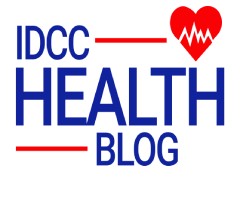Can You Be Admitted to Hospital for Pain Management?
When pain becomes unbearable, where do you turn? Many wonder, can you be admitted to hospital for pain management, or is that reserved for more visible emergencies? The answer isn’t as straightforward as it seems—and what you discover might challenge everything you thought you knew about medical care, pain thresholds, and your rights as a patient.
TL;DR
Hospital admission for pain management is justified when pain is severe, persistent, and unresponsive to outpatient treatment or when it signals a serious underlying condition (e.g., cardiac, neurological, post-surgical, or infectious). During hospitalization, patients receive thorough evaluation, personalized treatment, and continuous monitoring. Alternatives such as acupuncture, physical therapy, and nerve blocks can be effective without requiring admission. Successful pain management also relies on open communication with your doctor, adherence to treatment, shared decision-making, and regular follow-up.
Find pain management doctors in Brooklyn, New York today!

What Are the Criteria for Hospital Admission for Pain Management?
Certain clinical conditions determine when a patient should be admitted to the hospital specifically for pain management. These include:
- The need for intensive hospital-level pain treatment
- Life-threatening risk requiring ongoing medical care
- Procedures that can’t be handled at home
- Increased risk of complications
- Preventive care in a hospital setting
Recognizing these criteria helps identify when pain has gone beyond what can be treated at home or in a clinic. In these cases, hospitalization can prevent complications and protect the patient’s life.
When Is Hospitalization for Pain Needed?
Hospitalization isn’t always required for pain, but there are situations where it becomes necessary to protect the patient’s health and safety. Common reasons include:
- Severe, persistent pain that doesn’t improve with outpatient treatment: Requires stronger treatment and medical supervision.
- Signs of emergency: Pain with symptoms like breathing difficulty, long-lasting seizures, loss of consciousness, or uncontrolled bleeding needs urgent care.
- Serious medical or post-surgical conditions: Pain from infections, recent surgeries, or worsened chronic diseases may require close monitoring.
- Neurological symptoms or loss of body function: Pain with trouble speaking, moving, or seeing could indicate a serious neurological event.
Recognizing these signs early can change the outcome for the better.
Types of Pain That May Need Hospitalization
Not all pain points to an emergency, but some types may signal serious conditions needing immediate care.
Examples of pain that may require admission:
- Chest pain – Could indicate a heart attack, pulmonary embolism, or aortic dissection
- Sudden abdominal pain – May be caused by appendicitis, organ perforation, or obstruction
- Severe headaches with neurological symptoms – Could suggest a stroke, meningitis, or brain bleeding
- Intense post-surgical pain – May be a sign of infection, internal bleeding, or healing complications
- Pain in limbs with signs of infection – Swelling, redness, fever, or pus may suggest cellulitis or an abscess
- Pain not responding to medication – May point to an underlying issue that needs deeper investigation
- Pain with shortness of breath – May indicate a serious heart, lung, or systemic problem
If you experience any of these, seek immediate hospital care to avoid serious complications.
What to Expect During a Pain Hospital Stay
Being hospitalized for pain can cause uncertainty, but knowing what to expect can help you feel more at ease. The main goal during your stay will be to control pain safely, prevent complications, and get you ready to go home with a clear care plan.
Initial Evaluation
Once admitted, a medical team will assess the cause, severity, and impact of your pain. This includes physical exams, reviewing your medical history, and possibly running diagnostic tests.
Personalized Treatment
Your care team will design a treatment plan that may include:
- Pain medication, including opioids when appropriate
- Relaxation techniques to ease muscle tension and stress
- Physical therapy for musculoskeletal or post-surgical pain
- Complementary therapies, depending on availability and recommendation
The aim is to relieve pain effectively while minimizing side effects.
Ongoing Monitoring
Your progress will be monitored closely. The care team may adjust your treatment based on your response and watch for any adverse effects.
Hospitalization focuses on quick pain relief while helping you return to daily life safely and with clarity. Medical support during your stay is key to a successful recovery.
Alternatives to Hospitalization for Pain
Some pain conditions don’t require hospital admission. There are several alternative treatments that can offer significant relief and improve quality of life. These include both complementary therapies and interventional pain management techniques.
| Type of Therapy | Main Benefits | Intervention Level |
| Acupuncture | Pain relief, relaxation | Non-invasive |
| Chiropractic care | Improved posture, relief of musculoskeletal pain | Manual |
| Meditation / Relaxation | Stress relief, reduced perception of pain | Non-invasive |
| Nerve blocks | Direct interruption of pain signals | Mildly invasive |
| TENS (Electrical stimulation) | Temporary blocking of pain signals | Non-invasive |
| Trigger point injections | Targeted muscle pain relief | Mildly invasive |
| Low-level laser therapy | Reduced inflammation, tissue recovery | Non-invasive |
These options can be effective and reduce the need for hospital care. Treatment choice should be guided by a healthcare professional and based on your pain cause, previous results, and current health. Often, combining methods yields better outcomes.
Working with Your Doctor on Pain Management
Effective pain management depends on medical care and a strong partnership between patient and doctor. This means open communication, following your treatment plan, and staying involved in your care decisions.
Clear, Honest Communication
- Be specific when describing your pain: where it is, how long it lasts, the type (sharp, burning, pressure), and how it affects your daily life.
- Report side effects like drowsiness, nausea, or constipation.
- Let your doctor know if you’re unable to follow your treatment plan so they can adjust it as needed.
Follow the Treatment Plan
- Take your medication as prescribed—even if the pain lessens.
- Don’t stop or change your treatment without discussing it first.
- If you’re facing financial, physical, or emotional challenges, let your doctor know so they can offer support or alternatives.
Stay Involved in Decisions
- Ask questions and express your treatment preferences.
- Work with your doctor to create a plan that fits your needs and lifestyle.
- Consider non-drug treatments like physical therapy or relaxation techniques if they align with your goals.
Keep Regular Follow-Ups
- Attend all scheduled appointments.
- Report any changes in pain levels, overall health, or how you’re responding to treatment.
- If needed, ask to see a pain specialist or palliative care provider.
Taking an active role in your care improves results and helps tailor treatment to your unique situation.
Key Takeaways
- Admission is appropriate when pain is severe, persistent, and unresponsive to outpatient treatment, or when it’s associated with serious conditions like cardiac, neurological, or infectious issues.
- Hospitalization is considered when outpatient care fails, there’s a risk to life, necessary procedures can’t be performed at home, or when continuous monitoring is needed to prevent complications.
- When Hospitalization is Necessary
- Uncontrolled severe pain
- Signs of emergency (e.g., difficulty breathing, seizures, unconsciousness)
- Post-surgical or chronic conditions requiring supervision
- Neurological symptoms (e.g., loss of speech, mobility, or vision)
- Pain Types Requiring Hospital Care
- Chest pain (possible heart attack or embolism)
- Acute abdominal pain (e.g., appendicitis, perforation)
- Severe headaches with neurological signs
- Intense post-op pain with potential complications
- Pain with signs of infection (fever, swelling, pus)
- Pain not relieved by medication
- Pain with shortness of breath
- What to Expect During Hospital Stay
- Comprehensive evaluation by medical team
- Personalized treatment (e.g., medication, physiotherapy, relaxation techniques)
- Continuous monitoring and adjustment of treatment
- Education on post-discharge pain management
- Alternatives to Hospitalization:
- Non-invasive therapies: acupuncture, chiropractic care, meditation, TENS, laser therapy
- Minimally invasive interventions: nerve blocks, trigger point injections
- Collaborating with Your Doctor
- Maintain open, honest communication about pain and side effects
- Follow the treatment plan strictly
- Participate actively in decisions
- Keep regular follow-up appointments
- Request specialist referrals when needed
- Active participation in pain management leads to more effective, personalized care and supports better recovery outcomes.
Sources
- Tawil, S., Iskandar, K., & Salameh, P. (2018). Pain management in hospitals: patients’ satisfaction and related barriers. Pharmacy Practice (Granada), 16(3).
https://scielo.isciii.es/scielo.php
- Germossa, G. N., Hellesø, R., & Sjetne, I. S. (2019). Hospitalized patients’ pain experience before and after the introduction of a nurse-based pain management programme: a separate sample pre and post study. BMC nursing, 18(1), 40.
https://link.springer.com/article
